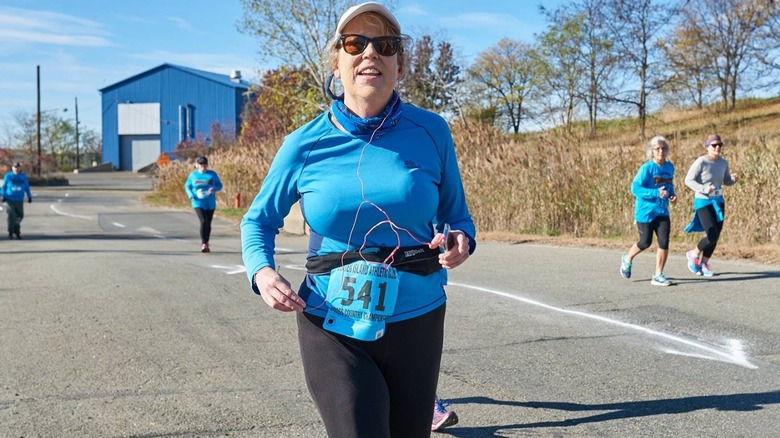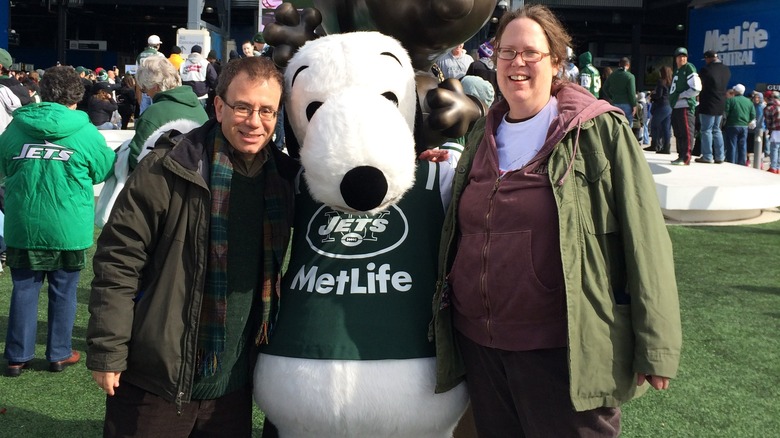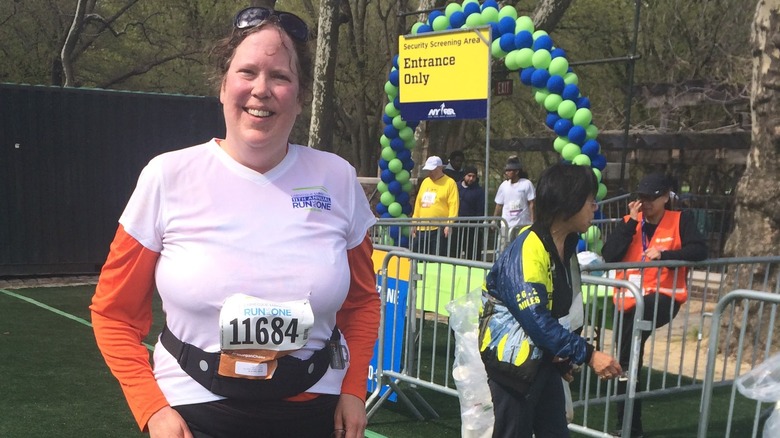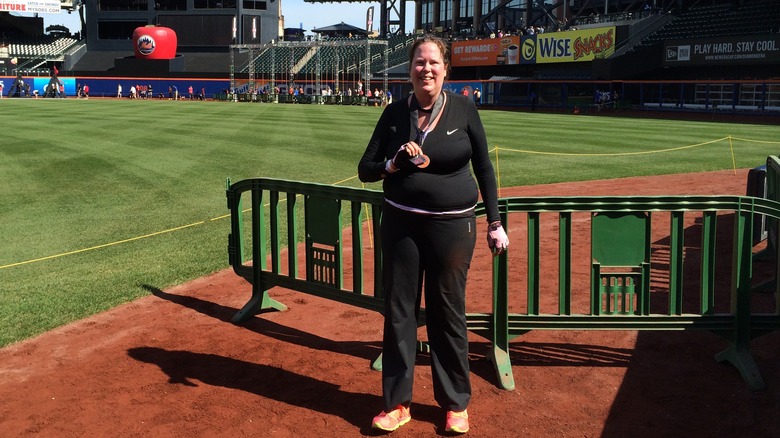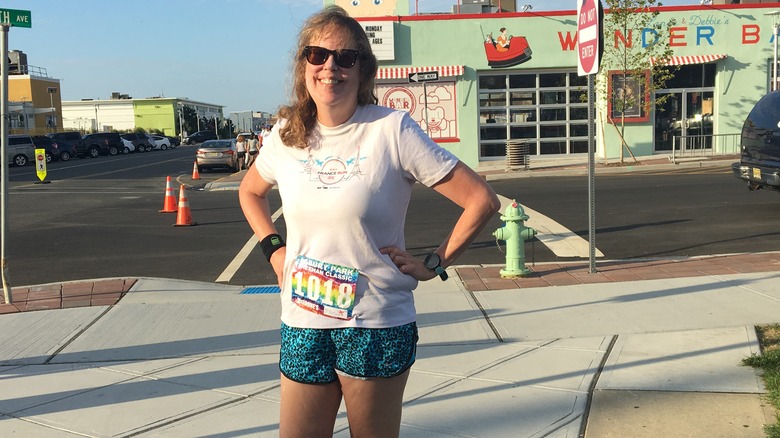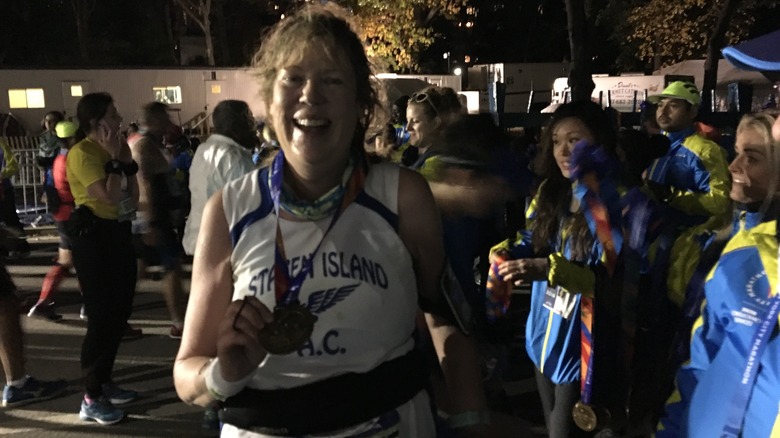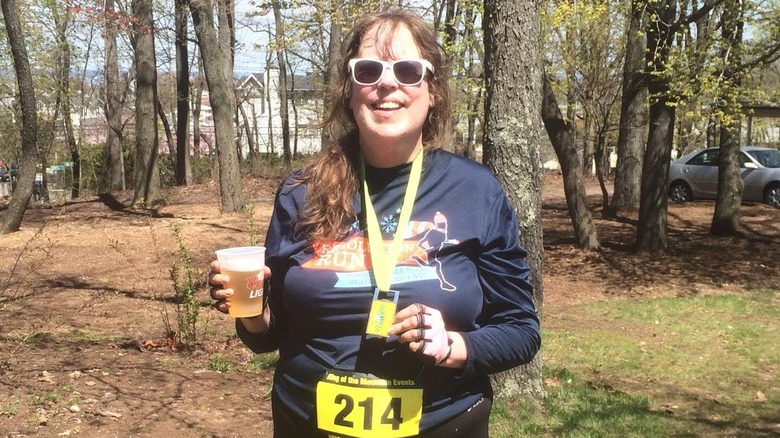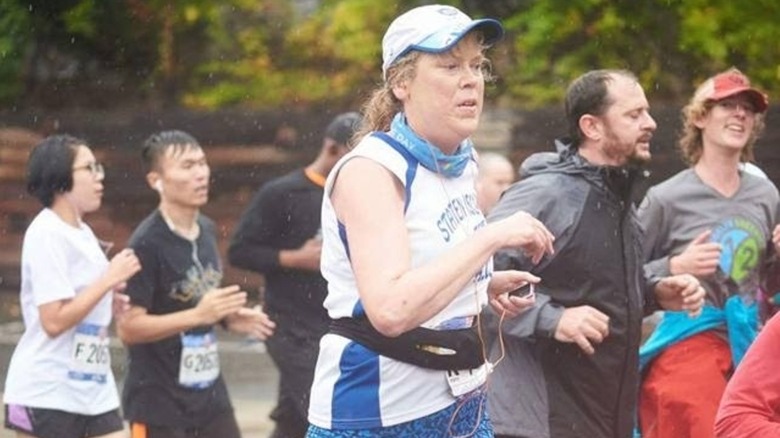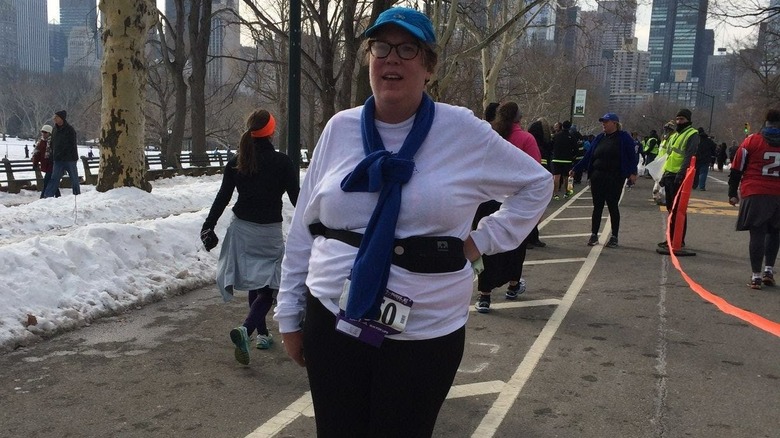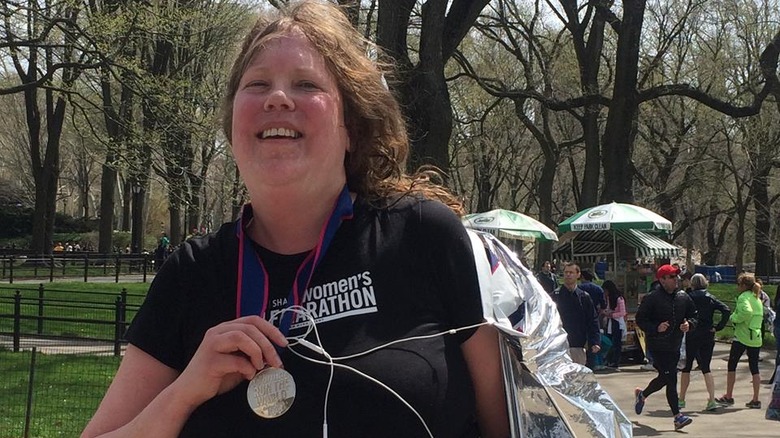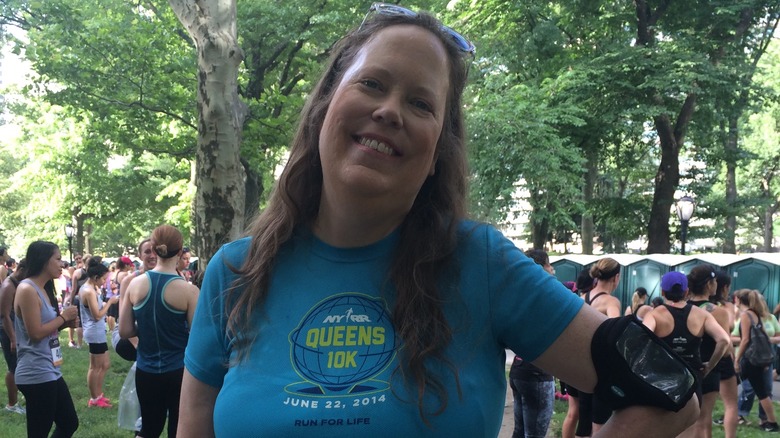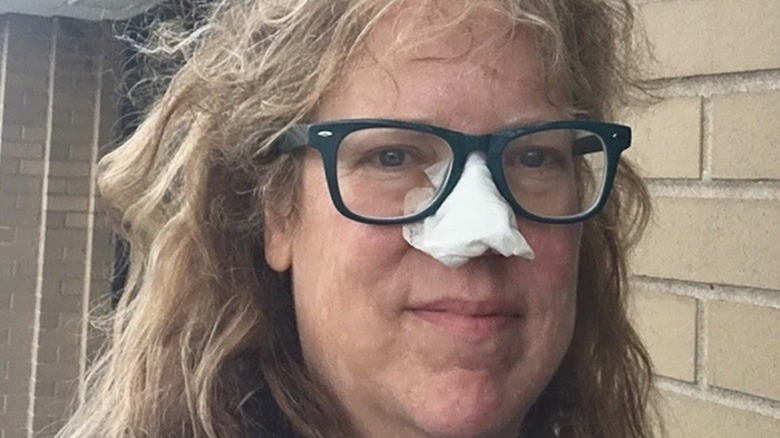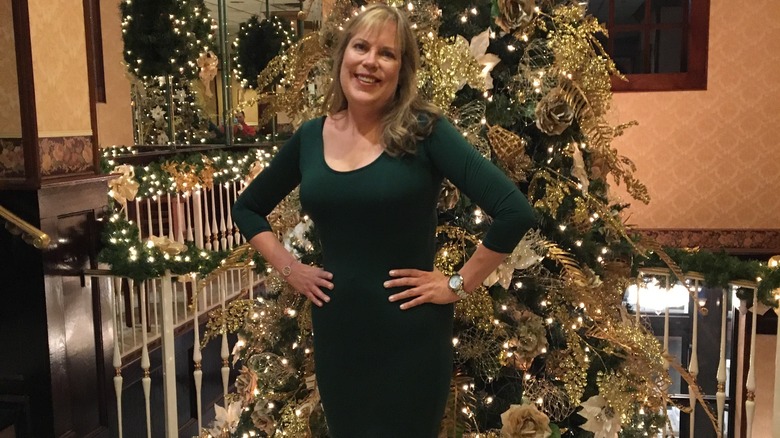What I Learned From Being A Slow Runner
Over 67 percent of the United States is either overweight or obese. Part of the reason we have become so fat is that only 20 percent of us get the recommended weekly exercise that we should, which is two and a half hours of cardio, and some sort of strength training twice a week.
Getting more Americans involved in running could change both of these sad sets of statistics. There are a lot of us out there who could reap the benefits of running, but they are afraid to because they are slow runners. I should know. I was one of those people. And then I dropped 80 pounds and completed two marathons. Here's what I learned from being a slow runner.
My 252 pound life
In 2013, I was an obese (252 pounds at six feet tall), middle-aged couch potato. Not only did I have a closet full of clothes that I was too fat to fit in, but I was sick and tired of getting winded walking up a single flight of stairs, or feeling like I was going to pass out running to catch a bus. And when I'd see pictures of myself, I'd know how much I had let myself go. Like when my best friend and I went to a Jets game and posed for a picture with Snoopy, and I was a big as the furry character was. (Years later, Jon joked that I was now thin, and Snoopy was on the unemployment line.)
My first attempt at fitness started with walks around my neighborhood, as well as mall walks. I was so out of shape then I was even at the back of the pack of those. But I kept at it twice a week. Then I started walking in a local three-mile weekly fun run that my future running club put on. I remember that it took me over 50 minutes to walk three miles the first time I did it, but I was elated to finish.
The fun in fun runs
After I started consistently walking three miles at a time in those fun runs, I mixed in a little jogging, and I got a huge adrenaline rush from doing so. It was the first time in my life I ever really enjoyed an athletic activity, even though I wasn't very good at it.
Around this time, I also did my first few formal 5K races, where there was a festive atmosphere, a t-shirt just for signing up, and even a post-race party. I loved everything about these races — the preparation, the excitement at the beginning, the race itself, and the exhilaration after finishing. I was hooked, and I wanted to run more and more. I quickly became addicted to these events, even though I consistently finished in the back of the pack.
From mall walking to a Spartan Race
In 2014, I had the opportunity to get into the Spartan Race at Citi Field for free as part of a promotion. My friends thought I was crazy to enter an event that combined a 5K (3.1 miles) with an obstacle course when I could barely complete a regular 5K. But I had begun to lose weight by pushing myself, so I decided to give the Spartan Race a shot and trained that winter and spring for it. It was the hardest physical thing I had ever done in my life, but I completed it, and it made me think I could do even more.
I eventually built my way up to 10K (6.2 mile) races and trail runs — and I found myself finally able to actually run, with minimal walk breaks. A member of my running club also started working with me as a coach to help me improve.
Around the time of my first half-marathon (13.1 miles) in April 2015, I found that the pounds were finally starting to fall off more quickly and I was getting a little faster. By that summer, I finally got below 40 minutes for a 5K. To put that number in perspective, it was still taking me over 13 minutes to run a mile — pretty pokey.
I am still very slow
Since I started my journey, I have run close to 150 road races and trail runs as of this writing, doing everything from one-mile races to marathons. In that time, I am now in the best shape of my life, in much better shape than when I was 20 or 30 years younger.
I did all this despite continuing to be a slow runner. To be sure, I am a faster runner than I used to be, but I still haven't been able to get under 35 minutes for a 5K or 1:15:00 for a 10K. And when I finished the New York City Marathon in November 2016, it was dark out, and it took me 6:16:09 to complete the course. It took me even longer to finish the New Jersey Marathon in April 2017; I got nauseated during the race and finished it in 6:30:24.
And I still don't quite know why I am still a slow runner, despite the weight loss. Maybe it was having encephalitis as a child and temporarily losing my physical coordination. Or maybe I'm just built this way. It's not for lack of trying to get faster. I've put in the work. And it can sometimes be frustrating to still be at the back of the pack. It's like perpetually being stuck at the kids' table at Thanksgiving and never getting to move up with grownups. But I still have learned a lot from being slow.
I learned to enjoy a physical activity without being very good at it
One of the cliches in America these days is the decrying of participation awards. Giving kids trophies just for showing up is supposed to lead to the end of our country or something.
I look at it a different way. I have hard-earned medals from many of the longer-distance races and trail runs I've run. My most treasured possession is my New York City Marathon medal, engraved with my name and finish time. Crossing the finish line and having that medal placed around my neck was the happiest moment of my life. Medals mean something.
And guess what? These medals are all participation awards in their own way. Showing up and finishing was enough to get a medal. The thing is, we complain about things like participation trophies and medals, then we wonder why so many kids avoid school athletic activities where only the physically gifted will get any recognition or respect. Maybe the other kids could use some recognition as well just for trying. Isn't half of life showing up and participating?
I hated every minute of gym class when I was a kid because I was terrible at it, and because I got made fun of for being terrible. Today, I find exercise fun, despite still being not very good at it.
I learned a mile is a mile, whether it's run at five minutes or 14 minutes
Before I started running, my best friend and I would see runners walking around Manhattan with their running bibs on after they finished New York Road Runner races. And we assumed that doing those races were only for the elite. It wasn't until I started running NYRR races myself until I saw that there was a place in running for everyone — even back of the packers like me.
A very cool thing about running is that you literally have the best runners in the world doing the same course with people like, well, me. It would be like playing a baseball game for fun with your friends in Yankee Stadium.
I learned to get out of my comfort zone
One of the things you learn from training for a race, and ultimately completing it, is how to be comfortable with being uncomfortable. The first few times I ran around a track with my running club, I was completely miserable. But I noticed that I found running a 5K easier, and I was a little faster, too.
Of course, there is a difference between discomfort and true pain, and it's not smart to run with the latter. But the only way to progress at all is to get out of your comfort zone. Not every day is going to be a good one. And sometimes, there are things you can't control, like rain, heat, cold, or other weather woes. You just have to get through it. I ran the Staten Island Half Marathon in 2016 (see above) where it rained the entire time, and I was covered in mud by the end. But I still finished in 2:39:02, a PR for me, because I kept on pushing out of my comfort zone.
As a slow runner, I'm out on the course at least twice as long as many other runners, so getting comfortable with being uncomfortable is crucial.
I learned perseverance
The only way to actually go longer distances, and to continue to improve, is to keep at it. For example, generally speaking, you are not going to be able to complete a half marathon unless you put in regular mileage — at least 25 miles a week, working up to a 10 or 11 mile long run.
No single training run will get you to the finish line in a race. It's lots and lots and lots of training runs. And my spirit animal is the turtle — slow and steady. If you put in the work, you will be able to complete the race. It's hard to keep at it, especially during marathon training, when I was running five times a week, putting in 40 miles a week at my peak, and the training really took over my life. But that's the only way to finish — keeping at it over and over.
All I have to do is look at one of my earlier running photos, like the one above, to see how perseverance pays off.
The sense of accomplishment in finishing is amazing
Before I ever ran a half marathon, I volunteered at the New York City Half at the finish line. And I noticed something interesting. Generally speaking, the people with the strongest positive emotional reactions to finishing were the slow runners. Some would struggle to cross the finish line, staggering across. Others would push to go as hard as they could. There would be lots of tears of joy, and screams, and raised arms. You could tell that this was one of the best moments of their lives. They might not be coherent in talking at first, but going those 13.1 miles was a huge accomplishment for them, especially if it took three hours or more.
For the faster runners, they might be happy to finish, but the emotions were a little less raw. And sometimes, the faster runners would even be a little annoyed with themselves at the end, disappointed with their time.
Both sets of runners had a sense of accomplishment, but for the slower runners, the fact that they were on the course for twice as long, and that the race was harder for them to finish, made their crossing the finish line much more sweet. I know I really treasure every time I finish a race, precisely because it's not something I'm talented at. I was particularly exhilarated when I finished the More/Shape/Fitness Women's Half Marathon in 2015. You can read it across my face in the photo above.
I became a more positive thinker
Five years ago, I never thought I could complete a 5K, much less a marathon. Now I'm reaching the point where I've become much more positive about what I can do. For example, I participated in the Five Boro Bike Tour in May 2017, despite having been on a bicycle outdoors exactly once in the past 30 years, and that was several years before. I had done plenty of spin classes indoors, though.
Being positive that I could succeed in bicycling close to 40 miles was crucial to actually doing it. If I had psyched myself out over it, I would still be at the starting line.
I learned to deal better with things not going my way
Being at the back of the pack isn't always fun — I've been in races where the race directors turned off the clock before I finished, where they ran out of medals, and where earlier runners took extra food and left the rest of us with nothing. I've been in races where there wasn't even water left towards the end. I've also had to deal with people walking across the track when I was trying to finish. For some race directors, we slow runners are an afterthought. I won't spend my money on those who act that way. Fortunately, they are few and far between.
And while most of the runners I've met are great, I've also had to deal with condescension and rude remarks at times. Like the runner who insinuated that I was slow because I just didn't want it enough. I told my coach about that, and he said to tell the guy to do a five-minute mile if wanting it was enough.
I also had a bad fall in October 2016 when training for the New York City Marathon. I ended having to get $3,000 in dental work and I have a permanent scar on my nose. It was hard to work through, but I had to get past it in order to do the marathon, and later, to get on with my life.
At a certain point in life, you learn, depending upon the situation, to speak up, ignore, or take the negative things in stride. You also have to cut out those who have nothing to offer you but constant negativity and nastiness. Easier said than done, but it's an important skill to learn in life. And it was brought home to me from my fitness journey.
I became more fearless
It wasn't that long ago in my life where I was spending money on a gym membership, but was terrified about doing group fitness classes. I didn't want to be the slowest, fattest one around a bunch of 20-something hardbodies. I was afraid it would be like gym class when I was a kid, where my classmates made fun of me because I couldn't catch or throw well.
Once you've done a few races, though, that self-consciousness slips away. You find yourself not caring about making a fool of yourself. I initially started doing the classes to cross train, and I was terrified about first going. But I found that a good instructor will appreciate you asking questions before and after class, and will try to help you improve. And that most people in the class are too worried about themselves to be gawking at you, even if you are inept.
Now I do everything from strength training and yoga to spin and rowing classes to Masala Bhangra and hip-hop dance classes. I like to try new challenges. And I literally do not care what others think anymore. That has carried over to the rest of my life. As Tom Brady put it after Super Bowl LI, "I don't want to give my power away to other people by letting my emotions be subjected to what their opinions are. So if someone calls me something, that's their problem. I'm not going to give away my power." I have the power to define me, instead of letting others do so.
I have made a lot of positive changes in my life since I started running in 2013. I'm a different person now, both physically and mentally. This journey has totally been worth it.
